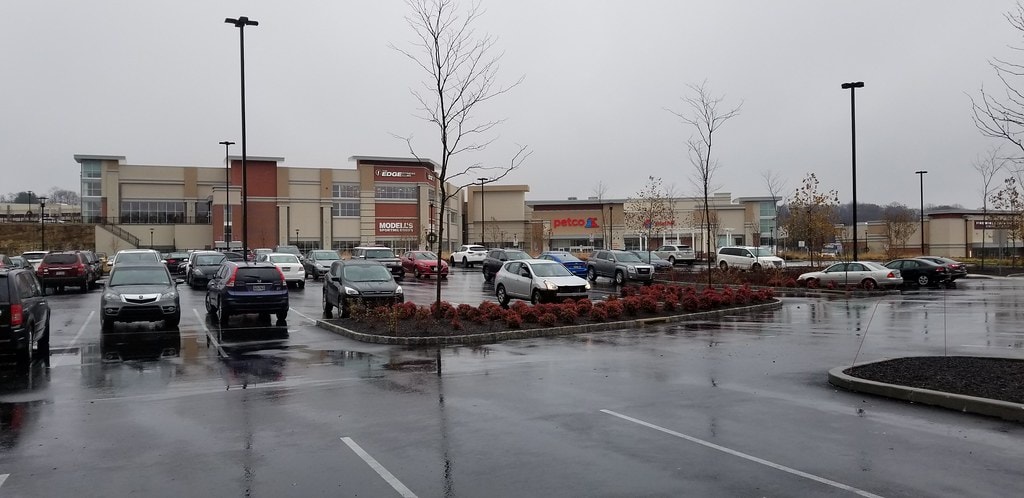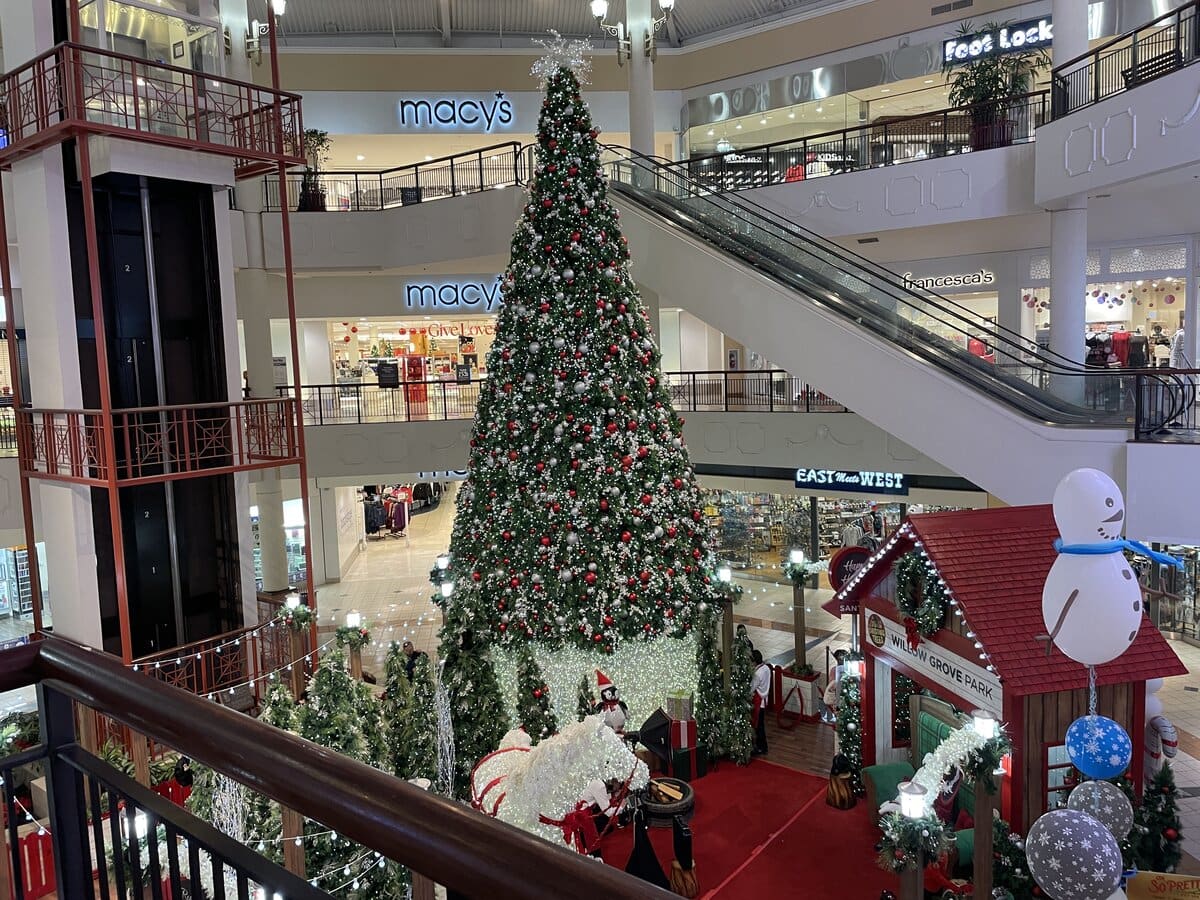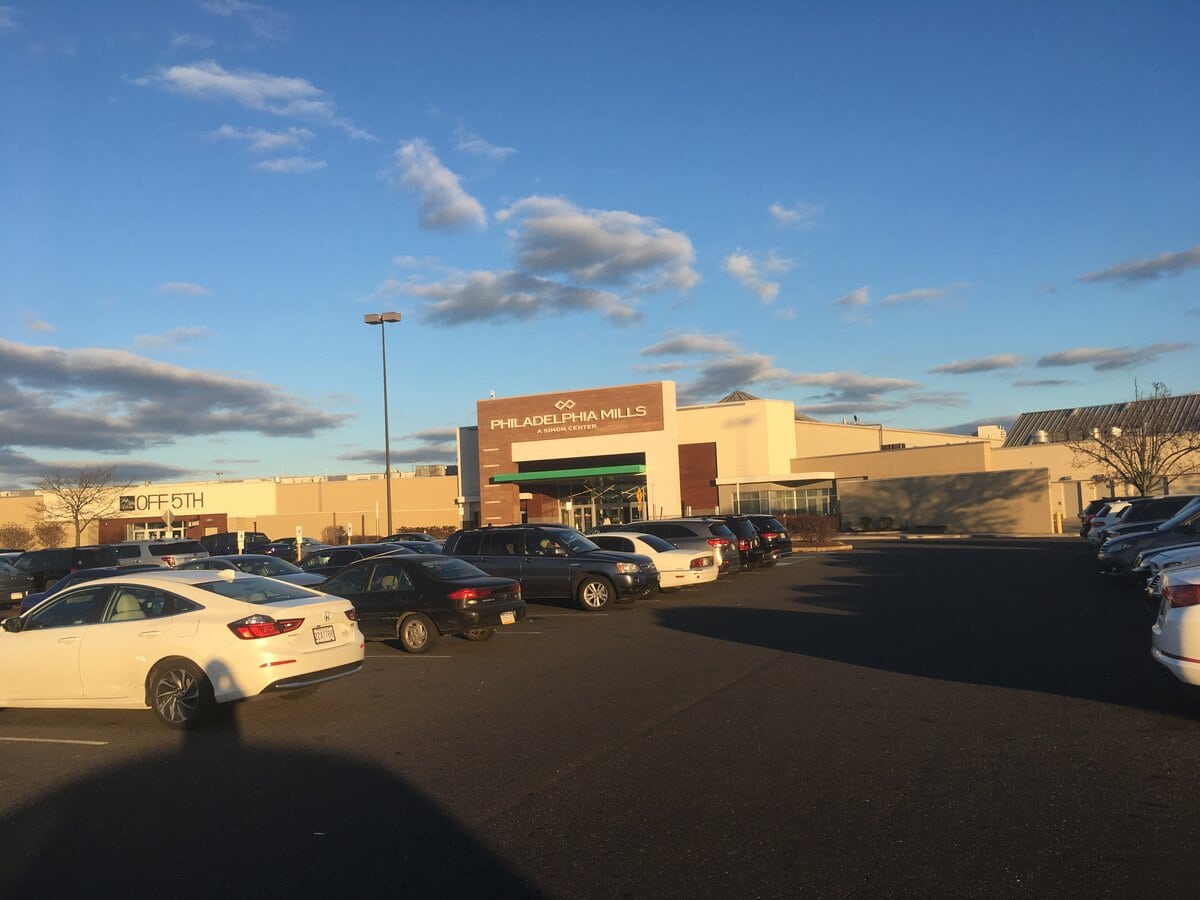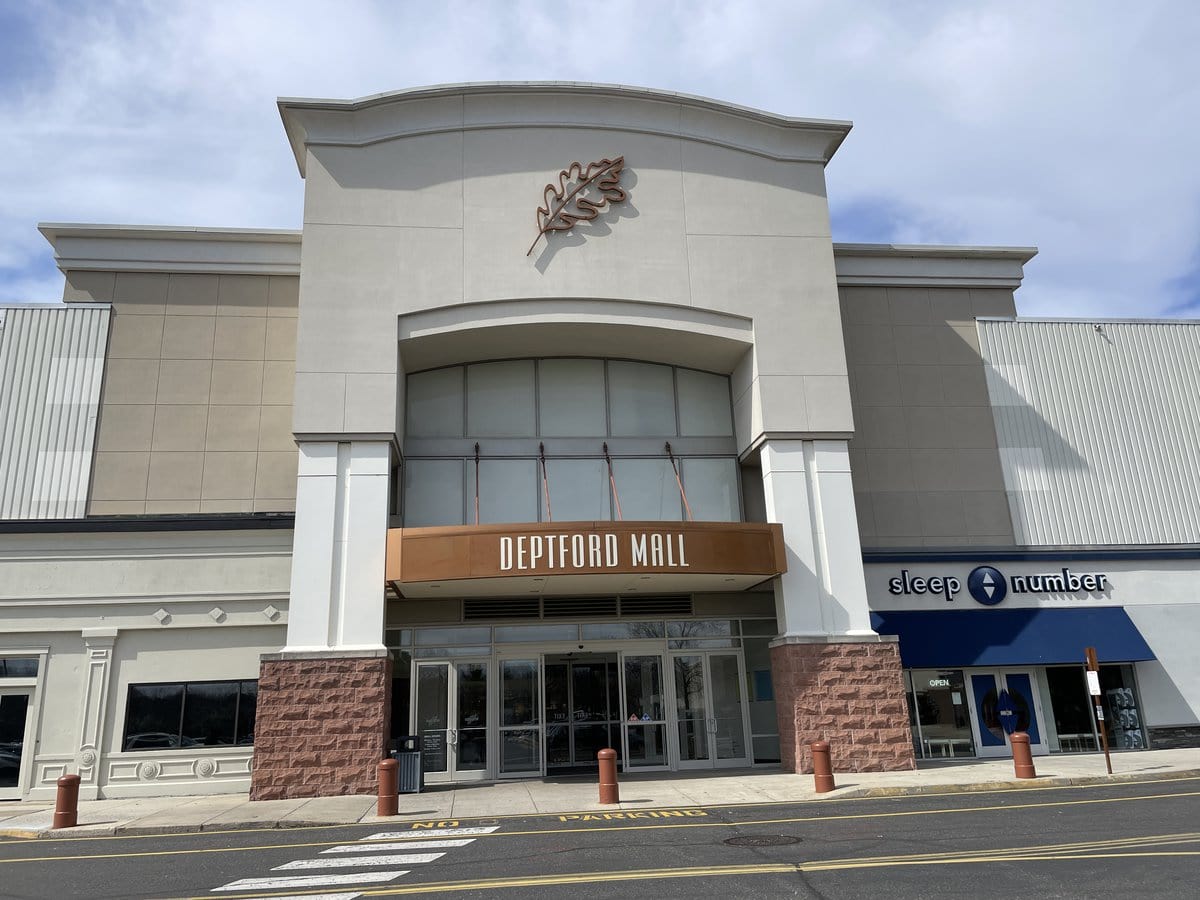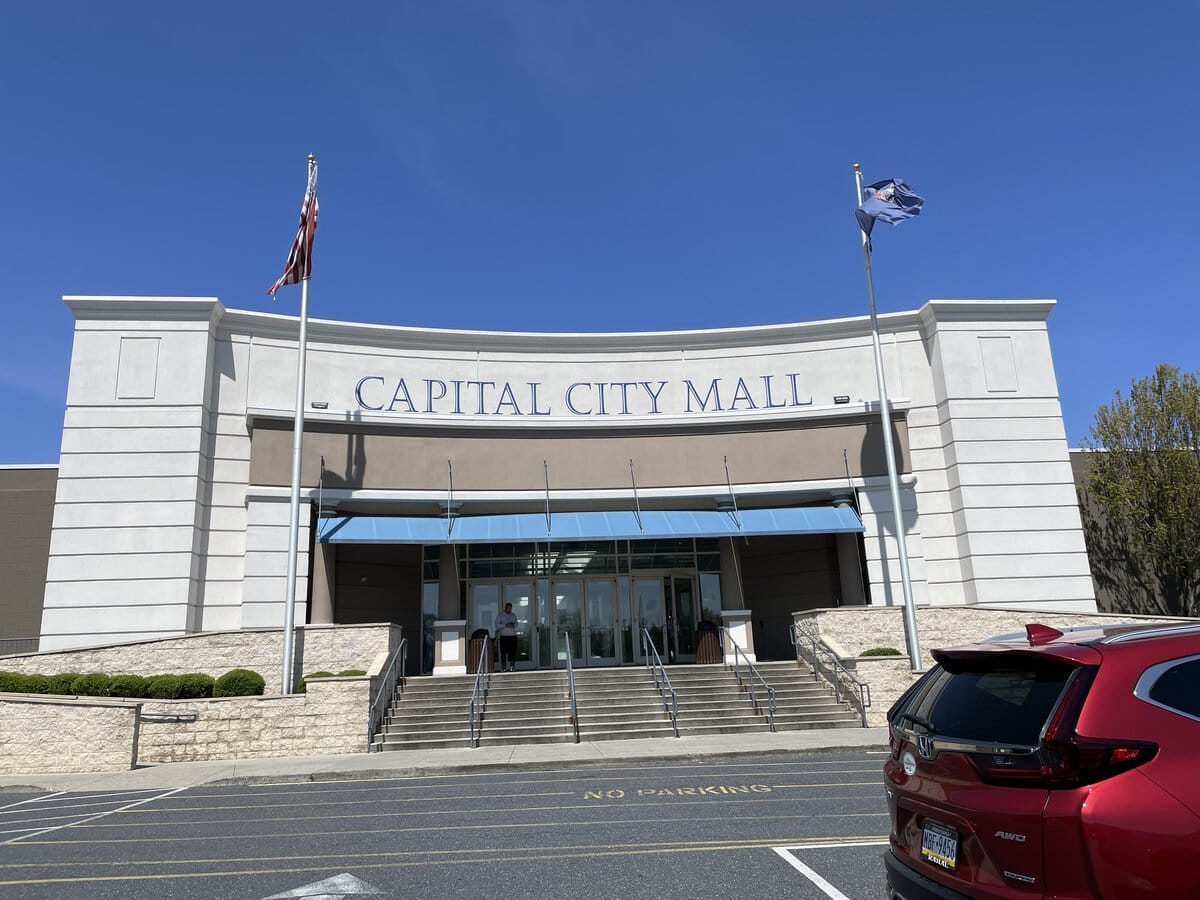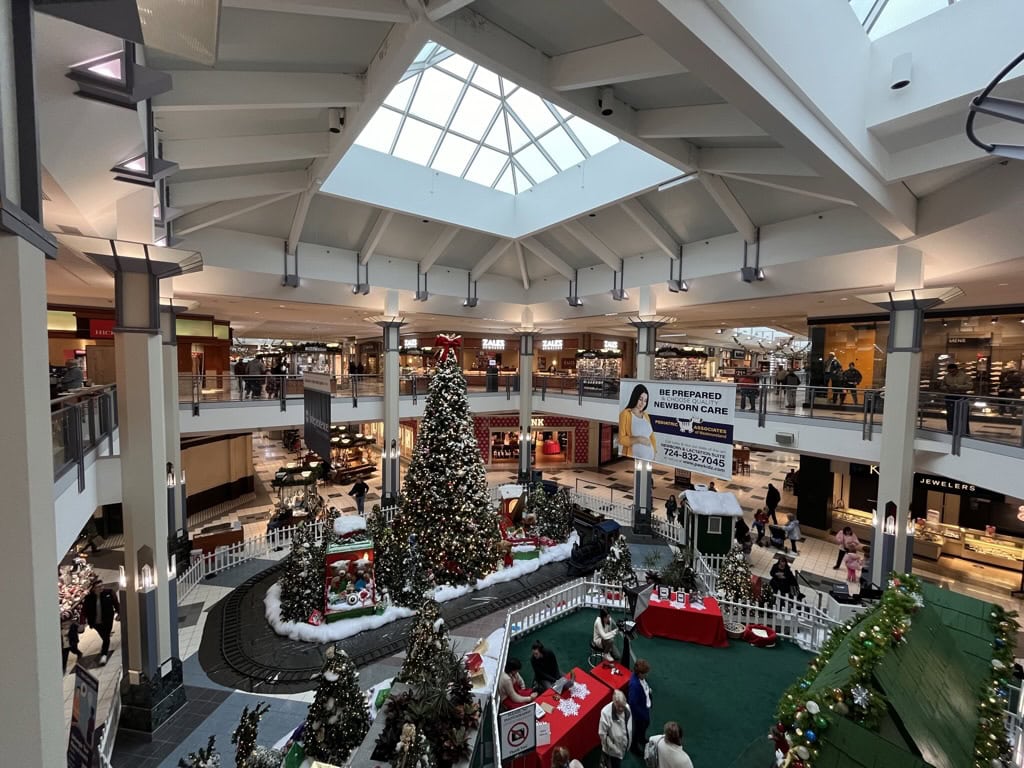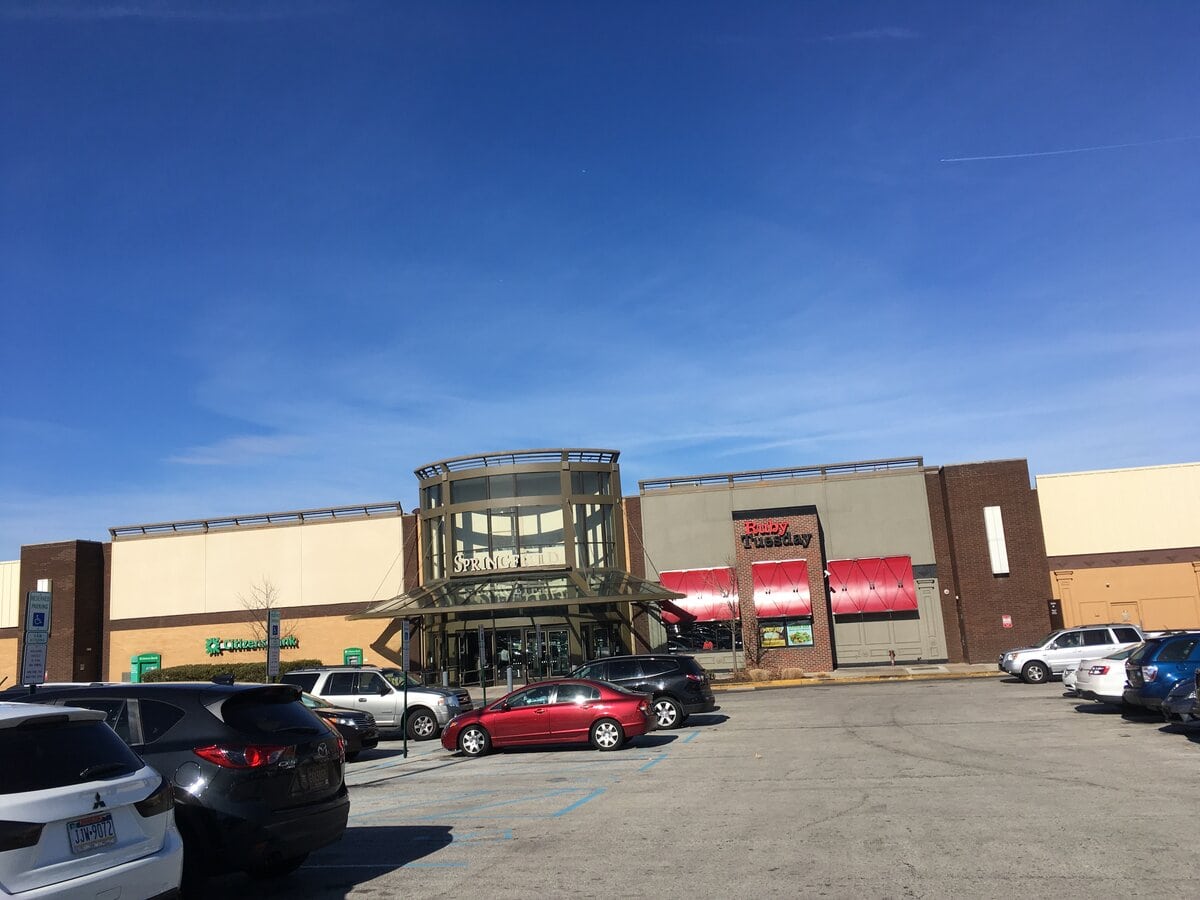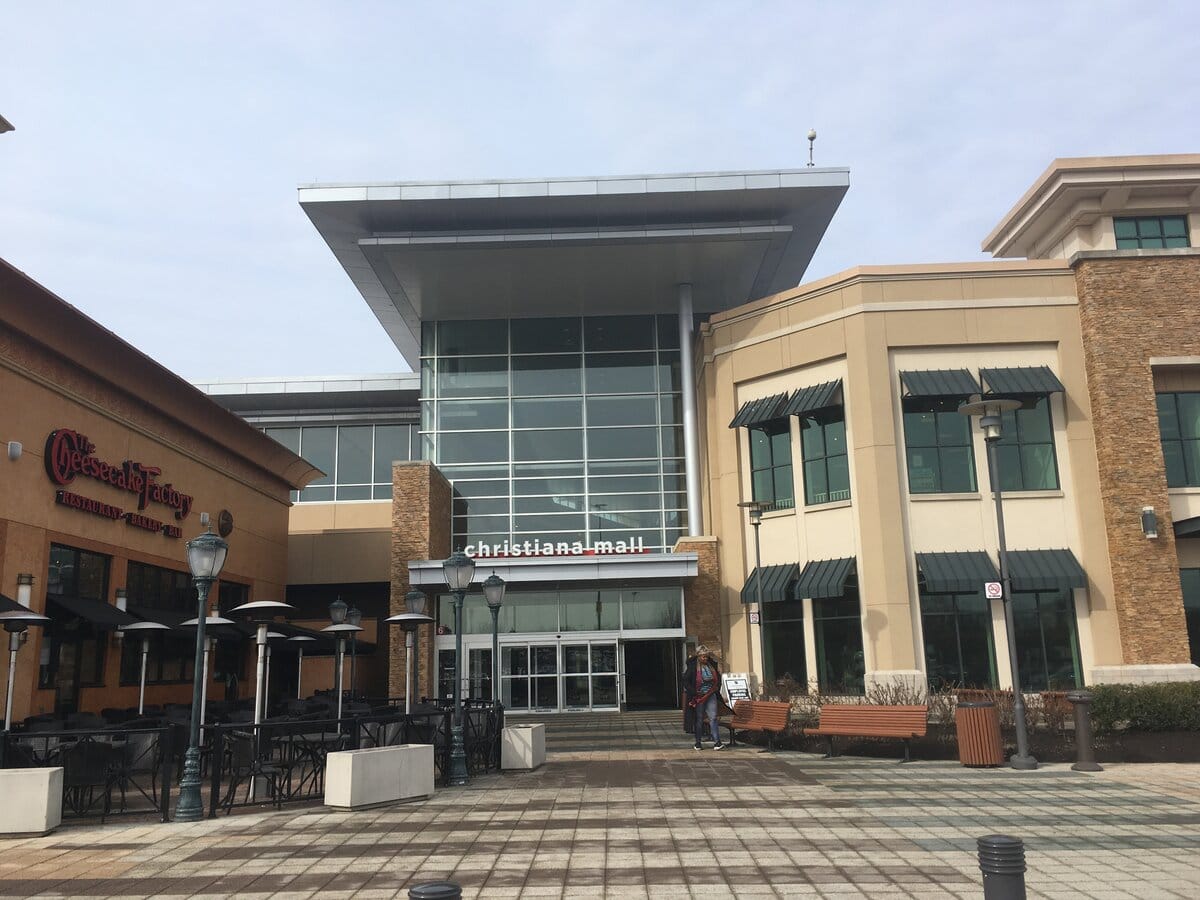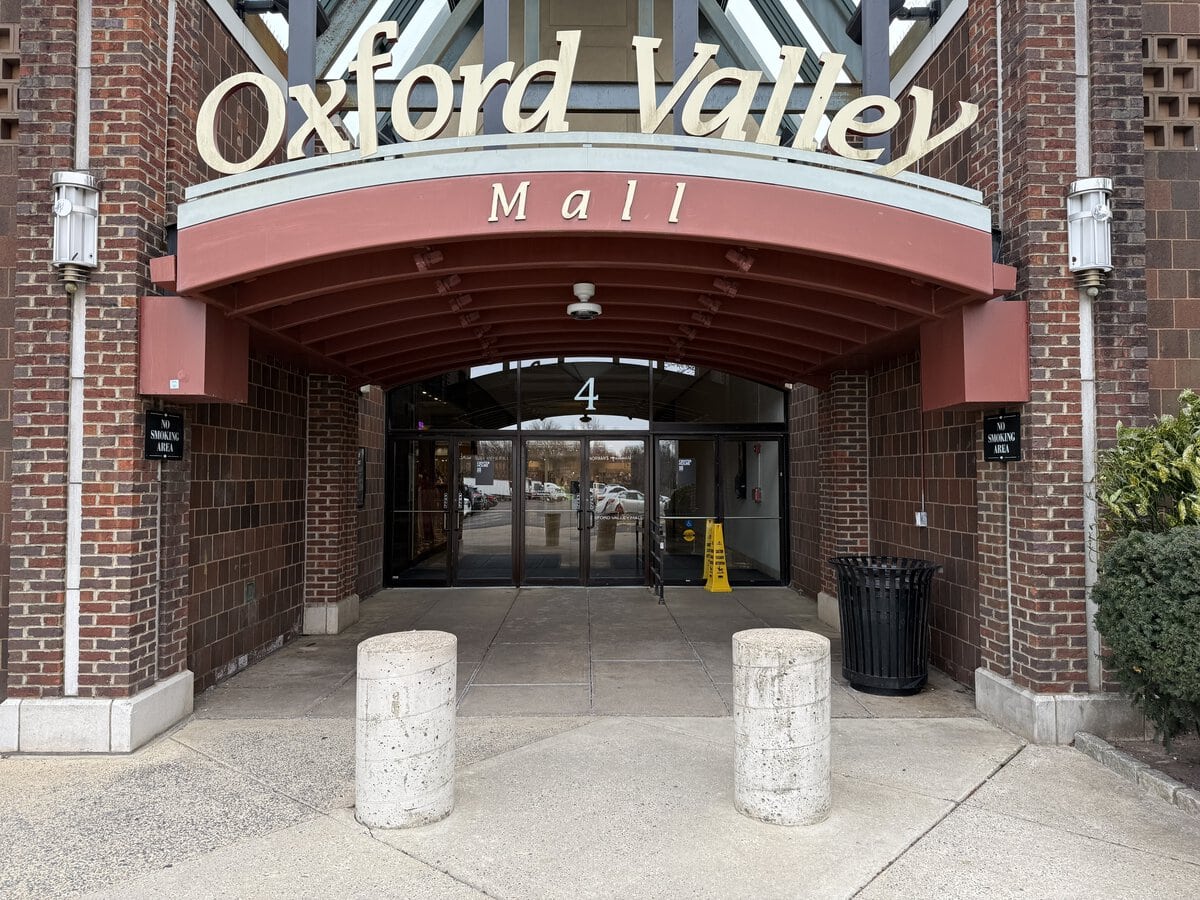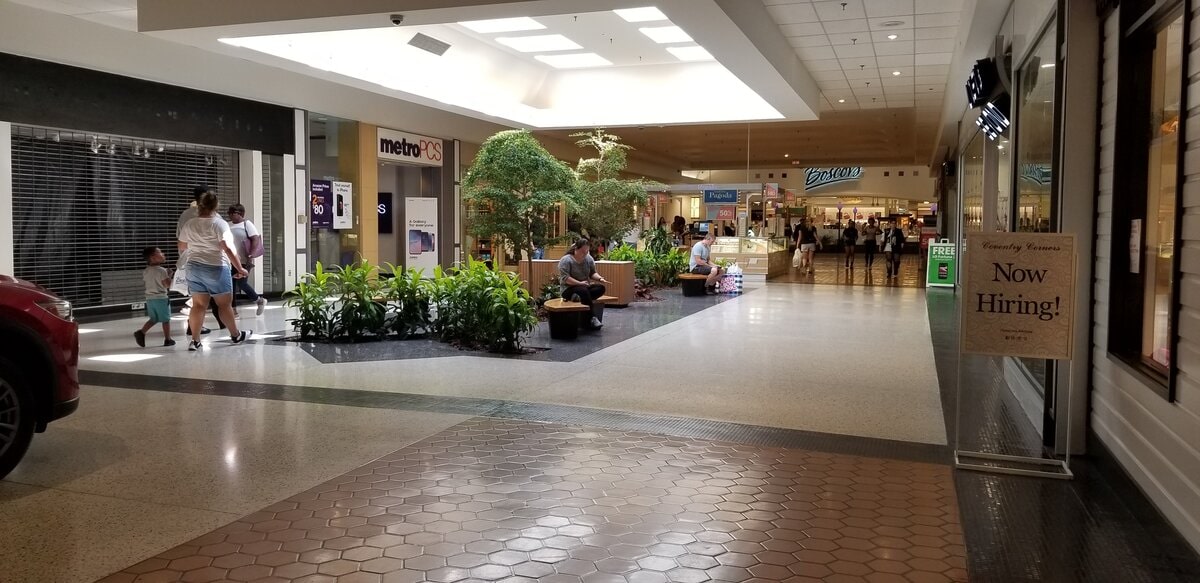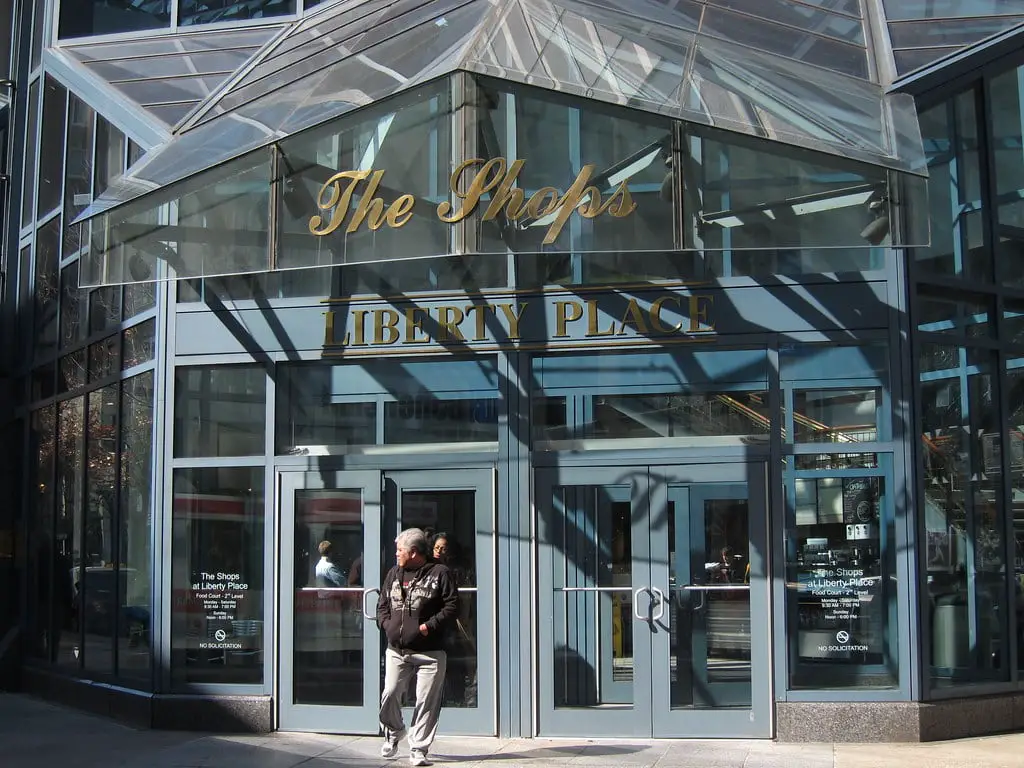Where Liberty Bell Park became Franklin Mills Mall
Long before outlet buses and food courts, the land at Woodhaven and Knights Road was known for horses instead of shopping.
Liberty Bell Park opened there on June 7, 1963, as a horse racing track covering 288 acres in Northeast Philadelphia.
The two-tier grandstand seated 30,000, with parking for 10,000 cars, a scale now seen only in crowds at zoning meetings in this town anymore.
The year was 1969, the state had just legalized thoroughbred racing, and the track seized on it, adding the new runs in a bid to pull more faithful gamblers into the lights.
For a moment, it did. A night out meant holding a folded program in one hand, a cigarette in the other, and watching the glowing scoreboard, hoping the next race would change your luck.
But people's interests changed, and the big concrete track looked out of place. On August 18, 1985, Liberty Bell held its last race.
Within months, the grandstand and huge parking lot were no longer a place for fun but a problem for selling land.
In the late eighties, the answer was clear to every developer. The land was sold for stores and businesses. The same 288 acres that once took bets on horses would now take a much bigger chance on American shopping.
From racetrack ruins to outlet lightning bolt
The big change came in 1986, when Western Development Corporation stepped in with a huge plan.
Led by Herbert S. Miller and Richard L. Kramer, the company from Washington wanted to turn the old racetrack into the world's largest outlet mall, with a planned cost of $300 million, which would be about three-quarters of a billion dollars today.
Western had already tried this idea before with Potomac Mills, a $100 million, 1.3-million-square-foot outlet mall that opened near Washington in 1985.
The Philadelphia project would be even bigger at 1.8 million square feet, and more daring. Cambridge Seven Associates of Massachusetts was told not to design a typical ring-shaped mall.
Inside the company, managers joked that the layout looked like a "modified train wreck," with several buildings joined at strange angles to make things less boring.
Publicists came up with a better image. They said that from above, the plan looked like a lightning bolt, as a tribute to Benjamin Franklin's kite-and-key experiment.
This bolt would be a mile-long hallway with about 250 stores, set up so shoppers would always see new things to buy.
The location, one mile west of Interstate 95 at the edge of Philadelphia and Bensalem, was chosen on purpose. Most outlet malls were in old factories far from cities.
Franklin Mills, as the project was named, would be different: a huge outlet mall connected directly to the highway and the city.
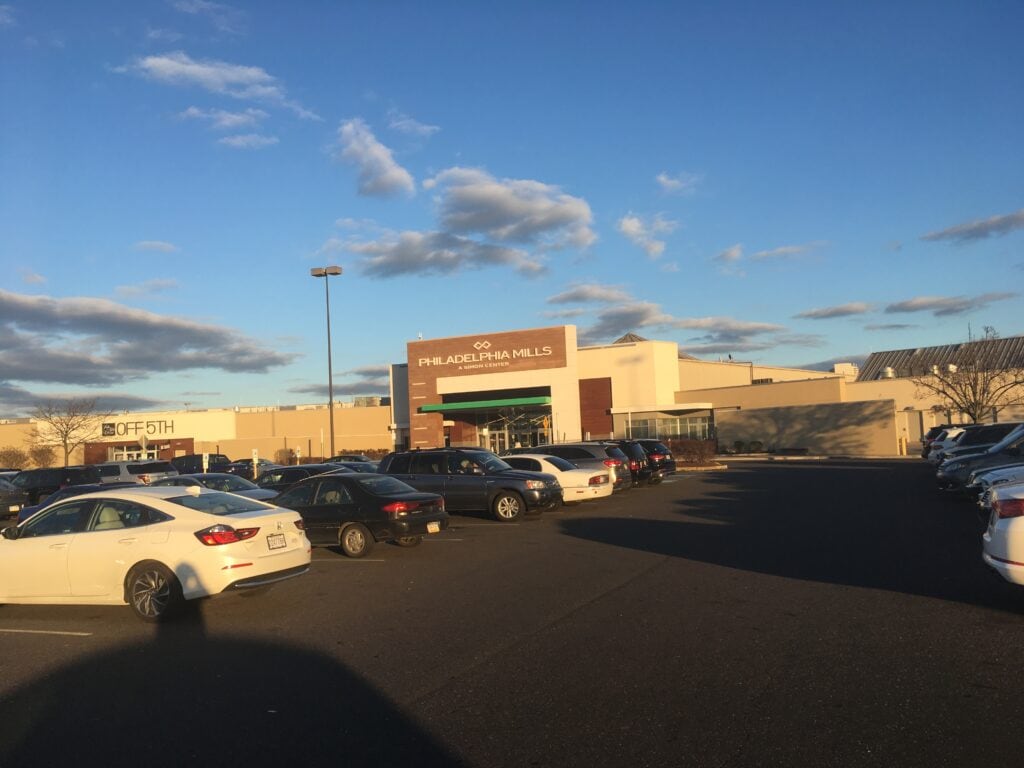
A mile-long maze of anchors, stores, and food courts
Franklin Mills officially opened on May 11, 1989, on the same 288 acres where horses once circled.
It was only about 60 to 70 percent leased at the start, with roughly 120 stores operating in a shell built for far more, but that was enough to make it the first new regional mall in the Philadelphia area since 1982 and, by its own accounting, the largest outlet mall on earth.
The interior was carved into four color-coded neighborhoods - Red, Blue, Yellow, and Green - each with its own exterior entries and anchor mix.
JCPenney Outlet, Sears Outlet, Ports of the World, Reading China and Glass, Phar-Mor, and the 49th Street Galleria arcade fronted the project.
Specialty stores filled in the gaps with surplus gear, shoes, and clothing.
The mall ran on spectacle as much as on discounts. There were two food courts: Cafe Court in the Red neighborhood and the larger Cafe Freedom in Green.
The Fudgery made candy in public, with workers singing while they stirred fudge and handed out free samples.
Bugaboo Creek, a theme restaurant, mounted talking animal heads on the walls and put a talking Christmas tree in the corner, turning a steak dinner into low-budget animatronics.
At the Grand Court between the Blue and Yellow sections, an animatronic face of Benjamin Franklin appeared to announce the time every hour.
History, in this version, was a fiberglass head wired into the mall's sound system.
Simon's big loan, Philadelphia Mills rebrand, and slow decline
In the 1990s, the formula was close to perfect. Franklin Mills sat just off I-95, large enough and odd enough to feel like a trip.
By the mid-1990s, it was drawing an estimated 18 to 20 million visitors a year. In 1997 alone, it averaged about 1.5 million shoppers each month.
Charter buses arrived from New Jersey, Delaware, Maryland, and even Virginia, pulling straight into the lots where race-day crowds had once parked.
On April 3, 2007, The Mills Corporation was acquired by a partnership including Simon Property Group and Farallon Capital Management.
Franklin Mills went into their joint venture. The new owners took out a loan of about $290 million backed by the property, then passed that debt into commercial mortgage-backed securities.
At first, the numbers justified the gamble. In 2008, the mall generated roughly $38 million in revenue and $21.4 million in net operating income, its peak under Simon.
But the building was aging, and the outlet concept was no longer exotic. Online retail was picking off the low-hanging categories.
In 2014, Simon tried to reframe the story. The mall was renamed Philadelphia Mills, downplaying the Franklin branding in favor of a clearer tie to the city.
The lightning-bolt logo came down. The old green-and-orange entry portals were replaced with more restrained orange-on-brown gates.
Simon invested in new entrances, skylights, parking lots, landscaping, restrooms, WiFi, and charging stations.
Part of the old Boscov's box, which had already cycled through tenants, was demolished to make way for a 180,000-square-foot Walmart Supercenter with a full supermarket.
By 2018, the lineup included Saks Off Fifth, Polo Ralph Lauren Factory Store, a Nike Factory Store, Urban Planet, and what was billed as the area's largest Forever 21, while the north-end fashion cluster had recently lost Neiman Marcus Last Call.
On paper, it looked current. The balance sheet was telling a different story.
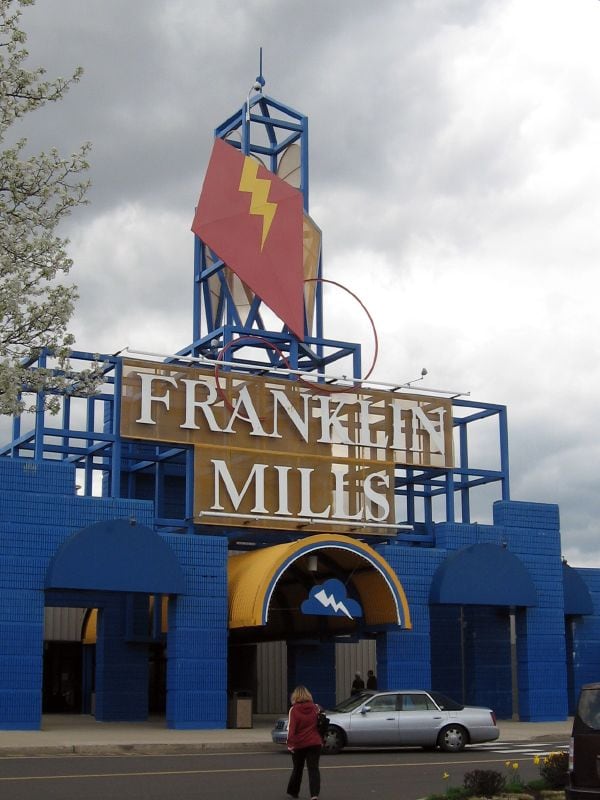
Debt trouble, receivership, and a mall on edge
After 2008, revenue dropped. By 2022, it was about $23 million.
In 2023, it fell again to around $19.5 million, with net operating income at about $10.6 million, less than half of what it was in 2008 and only a little more than the $9.7 million needed each year to pay the debt.
There was nothing extra left.
The property's value dropped at the same time. When Simon bought it in 2007, it was valued at about $370 million. In 2012, it was worth closer to $200 million.
By 2024, the City of Philadelphia said the complex was worth about $100 million, a 73 percent drop from the original value and much less than what was still owed.
The property's mortgage had already needed extra help once; it needed it again in March 2019. The loan was changed in August 2019, and the due date was moved to June 2024.
When the deadline came, Simon did not pay off or get a new loan for the remaining $258 million.
Instead, the company got ready to give the mall to its lenders, with just enough income to cover the debt payments.
In September 2024, the Philadelphia County Court of Common Pleas put OPEX CRE Management in charge of keeping the mall open while Greystone Servicing Co. and other investors decided what to do next.
Simon's name was taken off the signs. The words "A Simon Center" were removed from entrances that now seemed unsure about what would happen next.
The atmosphere inside matched the paperwork.
On December 14, 2024, just before 1 p.m., two men walked into the Zales Outlet, used a sledgehammer to smash display cases, stole eight Rolex watches, and fled in a newer black Hyundai with heavily tinted windows.
No one was injured, and no immediate arrests were reported. It read as a small, violent footnote in a larger story about a property on edge.
Tenants drifting out, a few still drifting in
Tenant history at Franklin Mills is a kind of time-lapse film of American retail.
Ports of the World, one of the original anchors, was rebranded as Boscov's and later replaced by Steve & Barry's, before the space went to Walmart.
Reading China and Glass disappeared; its space was split between Marshalls and OfficeMax.
Sears Outlet later moved into the former OfficeMax space, while its original location at the mall had already been turned into a multiplex, first run by General Cinema and later by AMC Theatres.
AMC ran a 14-screen, 68,000-square-foot complex there until its lease expired at the end of 2024. By mid-January 2025, the theater was closed "for good," another anchor gone.
JCPenney Outlet, an original 1989 tenant, had already shut down on July 31, 2017, after a nationwide pullback from outlet formats.
American Freight, the successor to Sears Outlet, closed in late 2024. In February 2025, GameStop and Sbarro closed their locations, and Forever 21 was in the process of winding down its large-format store.
Not everything moved in one direction. In early 2024, construction was underway on a 42,000-square-foot Anthropologie outlet at the property, a reminder that some retailers still saw value in the site.
Foot Locker Outlet signed a new lease.
By late 2024, the property had been sold to a private investment group with Jones Lang LaSalle handling management and leasing, and the mall was renamed yet again, this time back to Franklin Mall.
As of 2025, Franklin Mall remained the second-largest shopping mall in Pennsylvania, at around 1.6 million square feet. About 71 percent of that space was leased.
Anchors included Burlington, a Marshalls-and-HomeGoods combo, Walmart Supercenter, Dave & Buster's, Urban Planet, and Saks Off Fifth.
In February 2025, the mall drew just over 416,000 visitors that month, down 11 percent from February 2024 and a long way from the 1.5 million monthly shoppers it boasted in 1997.
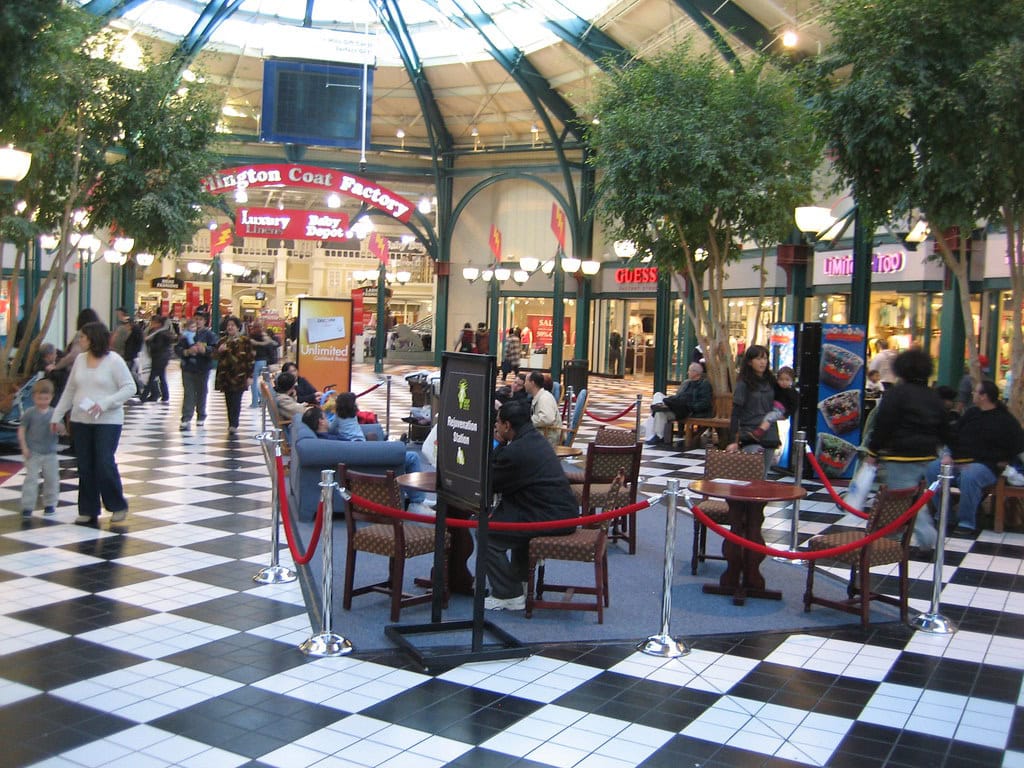
Sale signs, nostalgia, and the hard part now
By the summer of 2024, a private investment group with Jones Lang LaSalle and Namdar Realty Group as co-owners had taken control of the property.
By December, local news was talking about the return to the Franklin name and said about 92 stores were open. In April 2025, the property was being advertised for sale, with no clear plan for what would happen next.
The usual choices are being considered. Other malls in the area are being turned into places that mix apartments, townhomes, gyms, entertainment, doctors' offices, and some stores.
Exton Square and Neshaminy are often mentioned as examples.
Franklin Mills is huge, at 1.6 million square feet, and is surrounded by other shopping centers and large stores that draw customers away before they even get there, which makes any plan for Franklin Mills cost more and be harder to pull off.
Developers see a huge building that is tough to keep going as just a shopping center, and just as tough to change without a lot of money and patience.
People who care about saving the mall see more than just the money: the lightning-bolt layout, the different colored sections, the robot Benjamin Franklin that announced the hour, and how it was a popular bus-trip spot in the 1990s.
From Liberty Bell Park's final race in 1985 to the present, the land has hosted two different American fantasies: the track's dream of a big score and the mall's promise of endless discounted choice.
Franklin Mills, Philadelphia Mills, Franklin Mall - whatever name ends up on the next set of signs - is now the case study for what happens when both of those bets run out at the same piece of ground.

